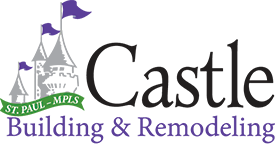Revamp for Remote Work: Redesigning Your Home Office
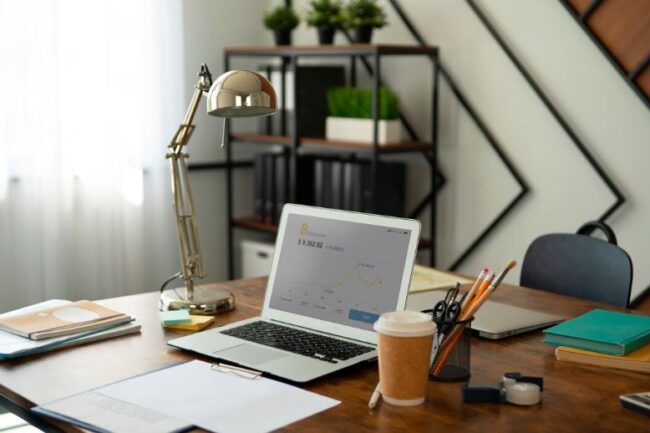
Many aspects of life have returned to “normal” in the years following the COVID-19 pandemic. One area that has not is modern working trends. The demand for remote work seems to only have increased in the days since a return to the corporate office was given the green light. This has led to the home office becoming a critical feature of all contemporary homes. However, not all home offices are created equally when it comes to productivity. Keep reading as we explore modern home office designs that will help remote professionals get the most out of their work day.
Noise Mitigation
The home office is not insulated by dozens of other offices designed with a similar goal in mind. It is part of a disparate household dynamic. Dogs barking, kids playing, and the neighbor mowing the grass are just a few of the many everyday noises that can disrupt professional responsibilities.
There are a number of renovations that can provide some noise mitigation. Decorative soundproof panels can provide a noise reduction coefficient (NRC) of up to .95 while covering as little as 15% of the wall area. This much-needed soundproofing mass can also provide an element of artistic intrigue to the office. Area rugs are another strong idea for limiting sound reverberation off of hard surfaces. There is even some noise-reducing office furniture with adjustable sound shades for next-level soundproofing.
Sliding Pocket Doors
Many home professionals do not have the luxury of living on sprawling estates. A 500 square-foot office is a pipe dream. Most remote workers have to get creative with the limited space they have.
One slick idea is to replace a traditional hinged door with a sliding pocket door. This can open up valuable square footage that can be used for extra seating or storage. Glass pocket doors are a trending option for their utility in creating clear sight lines and promoting natural light flow.
Accessibility Features
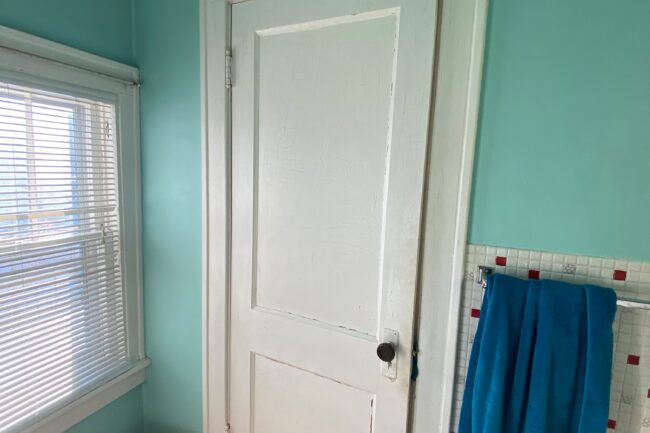 Accessibility issues are some of the most significant blockers of productivity in the home office. Too many people mix their personal and professional space. Shelves piled with dishes, clothes strung on office furniture, and Amazon boxes littered throughout create an environment that is not conducive to work.
Accessibility issues are some of the most significant blockers of productivity in the home office. Too many people mix their personal and professional space. Shelves piled with dishes, clothes strung on office furniture, and Amazon boxes littered throughout create an environment that is not conducive to work.
Take steps to reduce clutter throughout your home workspace. Try open shelving instead of drawers and/or filing cabinets. This can create an element of visual accountability. It is important to keep the home office open, well-lit, and flowing to boost mood and enhance productivity.
In addition, consider ADA accessibility as well. Even if you yourself are not ADA, there may be a time when you have an office visit with a client. Ideas such as ergonomic furniture, sleek wall mounted handrail options, and hard flooring materials (no carpet) are great features for improving visitor accessibility.
Low Maintenance Design
There are many advantages to being a home professional. No commute is nice. So is the more relaxed dress code (in most cases).
On the flip side, home professionals are in charge of their own custodial tasks. There is no one to come and vacuum or take out the trash after hours. To minimize time spent in these areas, consider designing with low maintenance materials. Solid surface desks and countertops make cleaning spills as simple as a wipe of the rag. Their nonporous fabrication ensures that a stain will not form even if spills are left standing for a while. Durable flooring, such as polished concrete, is not damaged by sliding chairs and can be easily cleaned with the occasional run of a Swiffer mop.
Flex Furniture
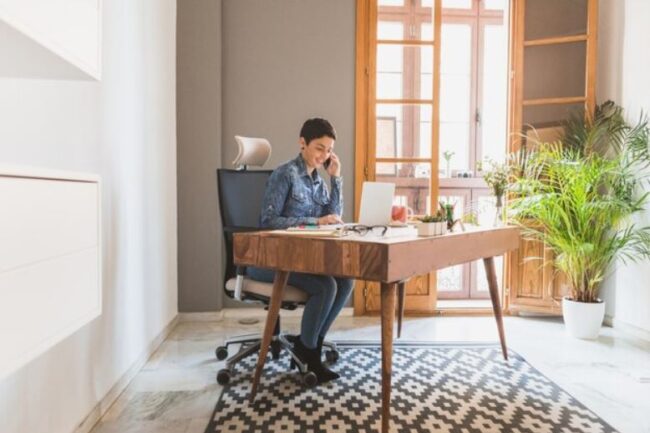
It is important to separate business from pleasure when designing a productive home office. Nonetheless, there will be times when some remote professionals simply have to double-dip on their space. The office may become a guest bedroom after hours during the holidays. Look for flexible furniture that can help accommodate this. Consider futon sofas that pullout into beds as needed. A Murphy bookshelf takes this concept one step further. The heavy oak desk is a no-go. Keep the desk slim and simple for easier reconfiguration.
Biophilic Elements
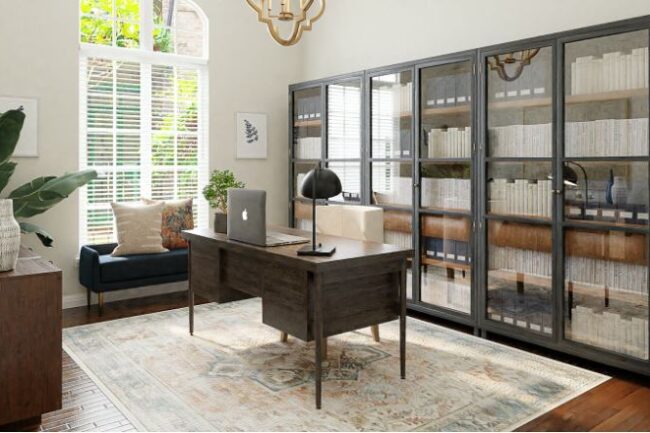
Despite spending more time inside than ever before, people are naturally drawn to the outdoors. Getting in touch with nature provides a calming sense of connecting to your roots. Biophilic design brings elements of nature into the home office. A large office window with ample sunlight is a great starting point. Plants and nature-inspired artwork are another great idea. Exposed wood beams or a stone focus wall are other features that can bring a calming, natural ambience to the home office.
Revamp Your Home Office for Increased Productivity
With the increased demand for remote work opportunities, home office design has seen a proliferation of interest in the past few years. From noise mitigation features to biophilic elements, consider any of the ideas listed above to make your newly redesigned home office a haven of productivity. For more on the latest trends in home improvement, explore the resources at Castle Building & Remodeling for the leading insights in the industry!
Author Bio:
Sam Willis is a freelance writer that loves sharing his knowledge and expertise in residential and commercial real estate, as well as engineering and construction. He lives in Atlanta, Georgia where he enjoys spending time with his wife and researching real estate trends in his free time. Sam’s work as a freelance writer can be found on Building Product Advisor, a construction industry resource site.
